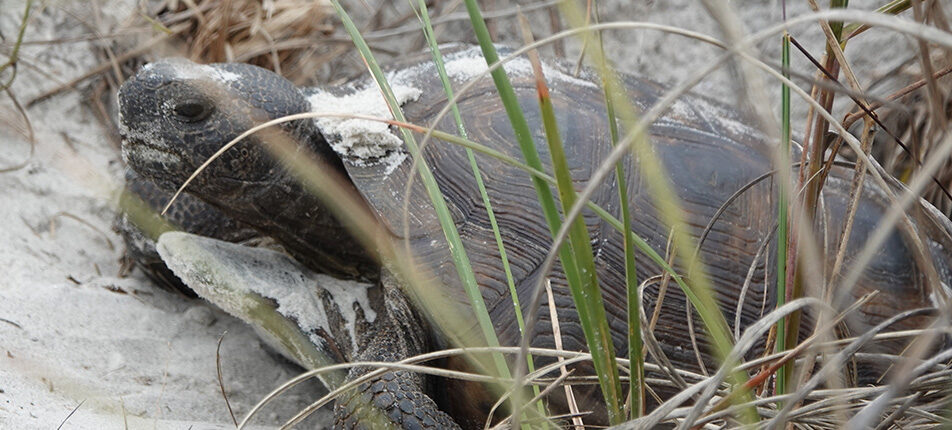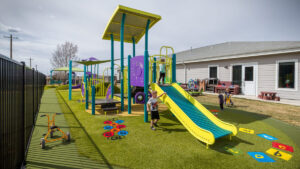Spanning over 17,000 acres of oak hammock, longleaf pine forests, and tidal wetlands, White Oak Conservation in Yulee, FL has committed itself to infuse green practices into the daily routines of every department. This commitment includes the innovative management of its world-class, 27-hole golf course. We talked with Tim Hiers, Director of Golf Course Operations at White Oak Conservation about how one of the top golf courses in the United States has created an environmentally transformative operation advancing conservation in some of the simplest, yet impactful ways.
Key Takeaways
More Than Just a Golf Course
When thinking of a golf course, biodiversity may not be the first thing that comes to mind. But, as Tim Heirs sees it, he doesn’t manage a golf course. He manages a watershed. A watershed made of prime edge habitat with streams running through grasslands, meadows entering woodlands, and longleaf forests meeting a river.
While most zoos and aquariums in North America manage far less acreage than White Oak, employing the big picture mindset could provide an opportunity to make facilities become an even more productive part of the local ecosystem. You don’t manage a Zoo, you manage an ecosystem with a zoo in it.
Increasing Carrying Capacity
While it’s common to think about the number of species and individuals a zoo or aquarium has in its collection, it can be easy to forget about the species that live in those “in-between” spaces. In his management style, Tim thinks of his golf course, and the hundreds of microenvironments it includes, as a home for plants and animals – whether it be “macroinvertebrates; bats, bees, or butterflies. It could be blazing star plants or it could wood piles.” Dead trees are trimmed for safety and left in place to provide homes for bugs and hunting perches for birds of all kinds. Tall grass roughs, which support a large food supply for endangered Florida grasshopper sparrows, are trimmed 2-3 times each year. By multiplying the thousands of acres under the care of recreational facilities and the number of species they support, it’s easy to imagine the collective impact that could be seen.
Working with the System
In managing his watershed, Tim stresses the importance of choosing the right kind of plants for the right locations. As he bluntly puts it, “don’t try to grow grass where grass doesn’t grow.” This seems like an obvious statement, but zoos and aquariums sometimes spend ample amounts of both time and energy working against the natural environment. While some species of plants provide a beautiful backdrop for understanding the native environments of animals from around the world, they may not necessarily be the most water, soil, or micro-climate friendly species.
The locations of some facilities provide the benefit of managing threatened plant species and ecosystems. For Tim, that means longleaf pine forests and their natural burning cycle. Tim’s team began using prescribed burns as a management tool 4 years ago and have seen major reductions in invasive plant species on the property and increases in both quail and gopher tortoise populations.
Building a Solid Foundation
As a solid foundation is necessary for new buildings, the health of the soil is essential to supporting biodiversity. Tim mentions that, unfortunately, one of the biggest enemies of soil is compaction – a condition that many zoos and aquariums battle. Taking a “farmer’s approach” could be a way to start building your foundation. Enlisting a local soil specialist and a water quality expert could be beneficial first steps to developing a plan for your facility. In addition to supporting more plants and invertebrates, healthy soil combined with high water quality can reduce the amount of water needed for irrigation each year.
As Tim helped to grow this program “from the ground up,” he understands the ins and outs of gaining support for new tactics and ways of thinking. Tim likes to take the approach of “don’t just tell them, show them.” By taking small steps, zoos and aquariums can begin to build a greener facility for themselves and start seeing results early in the process. Below are some ways to get started building your base:
- – Partner with a local plant society when updating landscaping.
- – Reach out to your county’s extension office for help assessing your site.
- – Combat soil compaction, from both people and animals, where you can.
- – Design new habitats as living ecosystems.
- – Invite native wildlife to become part of your guest experience.
By being good stewards of the land they manage, zoos and aquariums can become a model for the millions of guests they serve each year.




